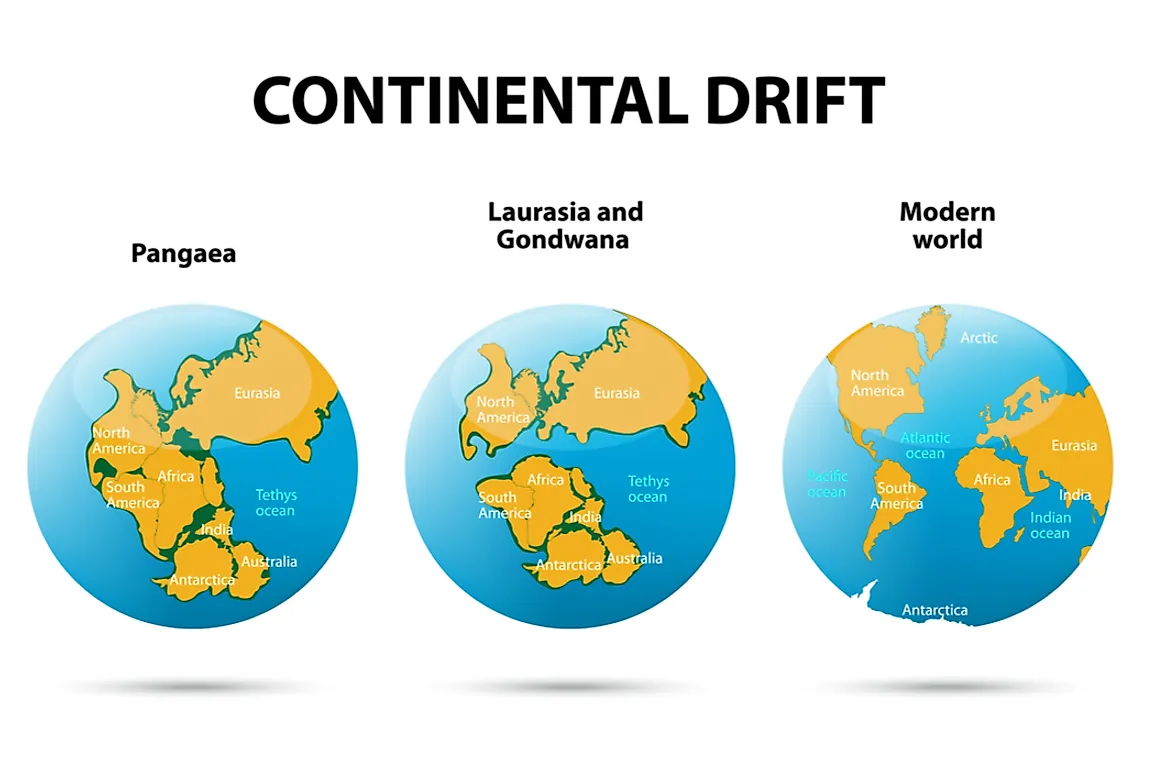What Was The Gondwana Supercontinent?

Gondwana was a huge landmass that fragmented to form the current day America, Africa, Australia, India, Arabian Peninsula, Balkans, Madagascar, and Antarctica. The merger concentrated on the southern hemisphere. The landmass believed to have started splitting about 180 million years ago covered almost 100,000,000 square kilometers (39,000,000 square miles). Researchers have established that the supercontinent was created by several cratons coming together during the late Neoproterozoic era and completely merged with Euramerica in Carboniferous thereby forming Pangaea. Fragmentation started in the Mesozoic.
Origin Of The Gondwana Supercontinent Concept
Gondwana supercontinent was named by Eduard Suess, a scientist from Austria. He derived the name from a region in Northern India called Gondwana. H.B Medlicott, a geologist also used the term Gondwana to describe a sedimentary sequence. The idea of the Gondwana was also explained by American named Francis Bacon and detailed further by Alfred Wegener of Germany. Alexander Du Toit of South Africa expanded the concept further. To distinguish between the region and the continent, the term Gondwanaland is used.
Formation Of Gondwana Supercontinent
The coming together of landmasses was a protracted procedure that took place in the Neoproterozoic and Paleozoic era. There is scanty paleomagnetic data on the whole process. The fragmented remains of an older supercontinent called Rodinia amalgamated first from the current area of Madagascar, India, Antarctica, and Australia. West Gondwana region comprising of Africa and South America formed the second orogenic belt.
Final stages of Gondwanan formation overlapped with the eruption of the Iapetus Ocean which happened between Laurentia and Gondwana west. At this point, the Cambrian explosion took place. Laurentia docked briefly next to the western boundaries of a united Gondwana next to the Precambrian shores. The Mozambique Ocean also formed during this era but disappeared leading to linking of India to Australia. South America was formed by blocks from Laurentia. Eastern Africa, Arabia, Madagascar, and India were assembled into supercontinent by a complex continuous process of orogenic events. The last Malagasy orogeny had an impact on South India, East Africa, and Madagascar. The Terra Australis Orogen which measured 18,000Km (11,000 miles) developed along the western, eastern and Southern margins.
The Pangaea Stage
The Pangaea supercontinent was created by Gondwana and Laurussia during the Carboniferous. Gondwana collided with Laurussia, shutting down the Rheic and Palaeo-Tethys water body. The closure led to docking of the northern terranes in Marathon, Ouachita, Variscan, and Alleghanian orogenies. The collision did not affect the southern ends of Laurentia. The last collision led to the formation of Variscan Appalachian Mountains that are currently found in Mexico and extends to southern Europe. This phase also saw the formation of Uralian orogeny and Laurasia which occurred as a result of Baltica colliding with Siberia and Kazakhstania.
Breakup Of Gondwana – Mesozoic
The fragmentation of the Gondwana began in the late Jurassic age which occurred almost 180 million years ago. East Gondwana which included Antarctica, Madagascar, Australia, and India was cut off from Africa leading to formation Indian Ocean. Small land massed drifted leading to the formation of Madagascar and Seychelles Islands.
West Gondwana, comprising of South America and Africa, separated leading to the formation of South Atlantic Ocean in the Early Cretaceous era.











